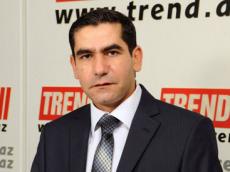Today.Az » Analytics » Iran's nuclear accord; All's well that ends well
22 January 2014 [10:30] - Today.Az

After nine years of extreme disputes, Iran and the international
community reached a historical accord and that was implemented on
Jan.20.
I said international community because the United Nations and all
major countries involved in applying restrictive measures to curb Iran's
hidden and suspicious nuclear activities were suspected to be used to
build an A-bomb.
Iran has repeatedly announced that the enrichment uranium is aimed to
produce nuclear fuel for power plants, but supplying the fuel of Iran's
only nuclear power plant Bushehr, is guaranteed by Russia for 10 years.
Russia delivered 82 tons of nuclear fuel in 2008 and 30 more tons in
May 2011 to Iran. This amount meets the Bushehr NPP's fuel needs for
four years.
According to the International Atomic Energy Agency (IAEA) when
issuing a publication on November 2013, Iran enriched 196 kg of 19.75
percent-enriched U-235 which was diluted or converted to oxide uranium-
Uco8- on Jan.20.
Iran's total 3.5 percent low enriched uranium (LEU) production at the
Natanz enrichment plant through November 5, 2013, is reported to be
10,357 kg, including 653 kg estimated by Iran to have been produced
since August 11, 2013.
Iran diluted about 100 kg of nearly 20 percent pure U-235 to 450 kg
of LEU on Monday. The arranged 164-centrifuge cascades have been
disconnected, but are still active and produce LEU.
Iran currently has enough 19.75 percent enriched nuclear fuel to meet the Tehran Research Reactor (TRR) for four years.
This means Iran needs neither 3.5 percent nor 19.75 percent pure nuclear fuel for four years.
Iran has installed 18,458 IR-1 centrifuges and 1008 IR-2m
centrifuges, of which only 9000 are active,but has to launch about
60,000 centrifuges to produce nuclear fuel at an industrial scale to
feed a 1000-megawat power plant the size of Bushehr.
In total, Iran fed 118,470 kg of 0.711 percent pure hexafluoride
uranium (natural uranium) to centrifuges yet to produce 10,375 kg of LEU
and 410 kg of 20 percent U-235. However, Iran's total raw uranium
resources are very low, amounting to 1527 tons.
Iran announced on February 2013 that recently discovered new mines
would triple the country's raw uranium resources. This amount is very
low for a country scheduled to build 20 nuclear power plants with 600
tons fuel consumption annually and needs to process above 10,000 tons of
raw uranium per year.
What was the result of hardliner's decision?
In case we accept Iran's declared goal, namely enriching uranium for
building nuclear fuel, it seems the country's risks are incomparable
with its rewards.
Iran's only nuclear power plant's total power production capacity in
the case of coming on stream completely, is about 1000 megawatts which
shares only 1.3 percent of the country's current electricity output.
This is while the cost of 30 tons nuclear fuel needed for its operation
is about $50 million per year.
However, Iran's annual loss from decreasing its oil exports during
the past two years is above $40 billion, while imposed sanctions halved
the country's auto production amount which is the second major industry
after the oil sector. The other sectors are in a similar situation which
led to a 5.8 percent-contraction of Iran's GDP during the past year.
The cost of development of Iran's giant gas field South Pars has been
doubled and according to the Deputy Oil Minister Roknaddin Javadi's
statement, Iran loses $36 billion annually due to delays in completion
of the field.
The new accord brought new blood back into Iran's economy recovery
and can provide Iran with great opportunities in the case of the
hardliners being allowed to progress nuclear talks.
Dalga Khatinoglu /Trend/
|